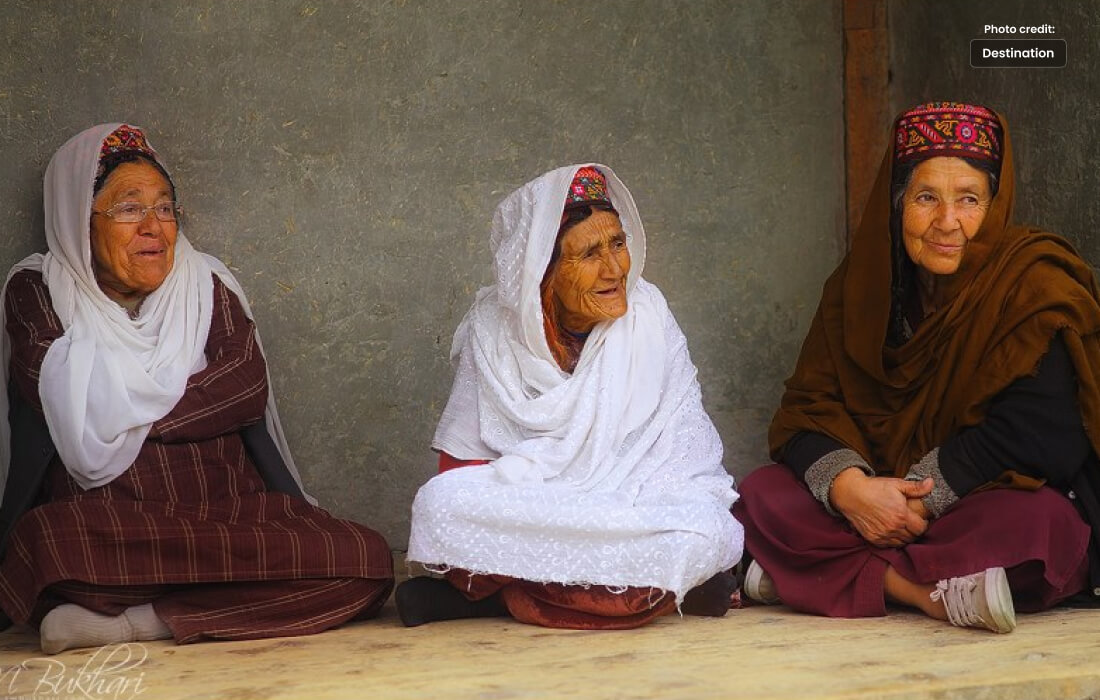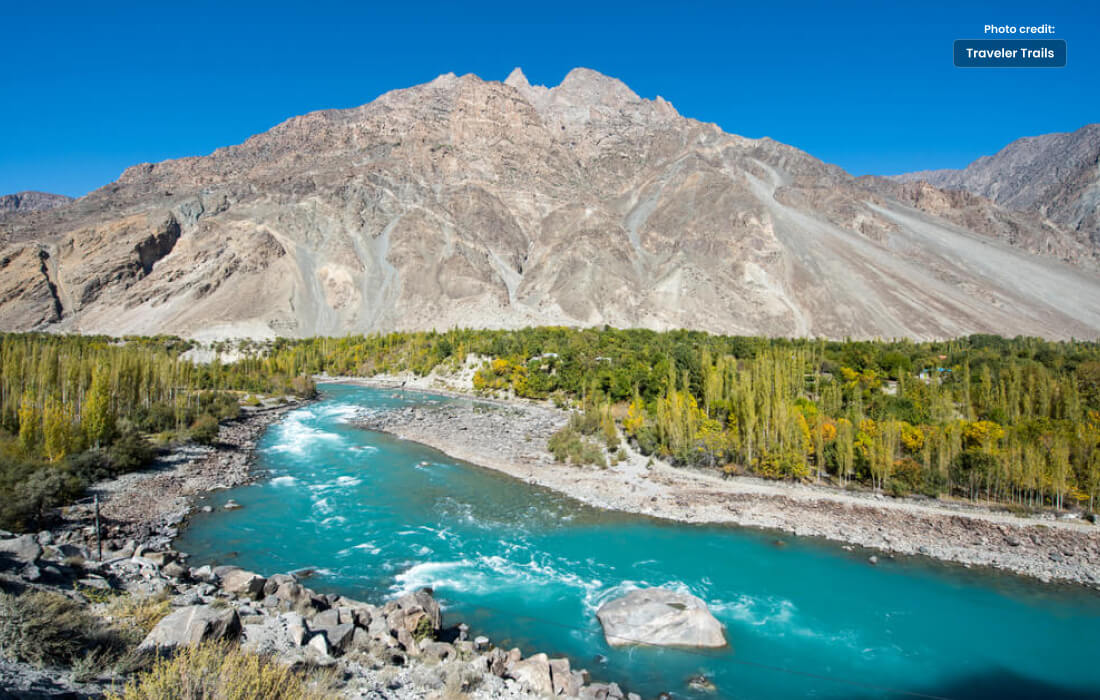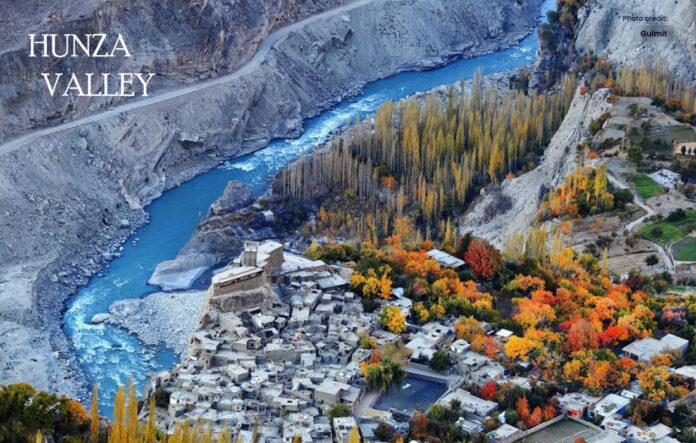Hunza Valley, nestled in Himalayas, is a stunning to nature’s beauty.
Nestled between the powerful Himalayan and Karakoram mountain ranges in northern Pakistan, the Hunza Valley is a captivating tribute to the natural beauty and tenacity of its people.
This tranquil paradise, which is sometimes praised as a real-life “Shangri-La,” reveals a landscape of snow-capped peaks, terraced farmland, and a rich cultural legacy.

Hunza Valley is surrounded by massive peaks that pierce the sky with their magnificence, including Ultar Sar and the famed Rakaposhi. The valley is a visual feast that appears to defy reality.
Terraced farms grow along the glacial Hunza River, which meanders across the environment and creates emerald staircases that descend the mountainsides.
The valley is always changing in color due to the varying seasons. Cherry blossoms and apricot trees bloom in the spring, bringing a pop of pink and white to the landscape.
Summertime brings lush foliage blanketing the valley, and fall drapes it in a tapestry of crimson, orange, and gold. A peaceful covering of snow in the winter transforms the surroundings into a charming winter wonderland.

Hunza Valley Nature Wonder
Hunza Valley is a historical and cultural treasure trove in addition to its natural wonders. The valley is home to the long-lived and culturally rich Burusho people, whose stories reverberate from the days when the historic Silk Road traveled through, bringing with it a variety of influences.
Historic sites like the Altit and Baltit Forts serve as keepers of the past, beckoning tourists to travel back in time and experience Hunza’s rich cultural legacy.

But the friendliness of its inhabitants is just as much a part of Hunza’s inherent magic as its scenic views. The people, who are referred to as “Hunzukuts,” welcome guests with open arms and invite them to enjoy regional specialties and traditional dances. Customary residences welcome storytelling events and the tasting of local delicacies.
A common sight in the area, apricot orchards highlight the culinary skills of the inhabitants and provide a taste of the renowned apricots from Hunza. Beyond the usual tourist experience, this cultural exchange offers a real and immersive contact.
Karimabad Bazaar is a thriving center of the Hunza Valley’s native culture. Its winding lanes are home to traditional stores that sell vibrant textiles and handcrafted goods. Spices abound in the air, and stalls showcasing a range of indigenous and foreign products are visible.
Take in the vibrant environment while savoring local specialties and haggling over one-of-a-kind treasures. The scene of the market, with snow-capped hills in the background, gives the busy marketplace a majestic feel.

Hunza River
Hunza Valley faces contemporary issues despite its remote position. Locals are adopting sustainable living habits as a result of the threat that climate change poses to the glaciers that feed the Hunza River.
With an emphasis on responsible travel, conservation, and community involvement, initiatives supporting eco-tourism and responsible travel have gained traction. The goal of these initiatives is to protect the pristine environment for coming generations.

To put it simply, Hunza Valley is more than just a travel destination. Its breathtaking scenery, extensive history, and friendly people provide for a fully comprehensive experience that enthralls the senses and the spirit. Travelers become a part of an enduring story as they take in the stunning environment.
The Hunza Valley is a picture of the exceptional grandeur of nature, beckoning anybody who dares to enter its embrace to experience the captivating charm at the intersection of unparalleled beauty and tradition.
Also read this: Sartyoon Sang Craft Exhibition 2023 will Starts On June 5th in Karachi




